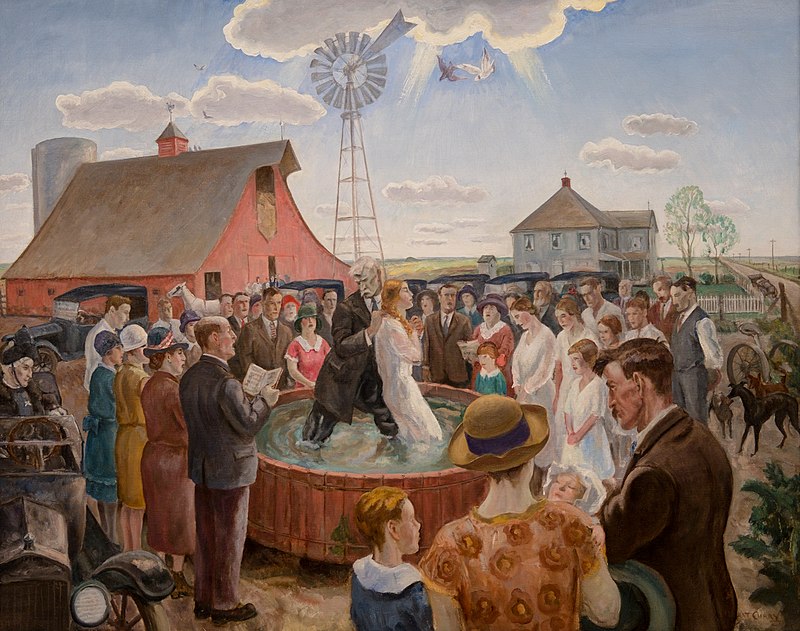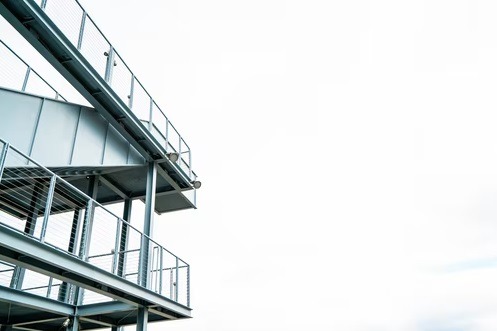The Whitney Museum of American Art, the foremost institution devoted to American art, exhibits the complete spectrum of twentieth-century and contemporary American art with a concentration on works by current artists. In addition, you can also check the top museums to visit in New York. The Whitney is devoted to gathering, maintaining, interpreting, and showing American art. Its collection, possibly the best collection of American art from the twentieth century in existence, serves as the museum’s main asset. The Biennial, the Museum’s premier exhibition, is the nation’s premier overview of the most recent trends in American art.
The Whitney’s current building, which was created by architect Renzo Piano and is located between the High Line and the Hudson River, significantly expands the Museum’s exhibition and programming space and offers the widest-ranging view of its unrivaled collection of modern and contemporary American art.
New York’s Whitney Museum of American Art
The founder and namesake of the museum, Gertrude Vanderbilt Whitney, was a renowned sculptor and dedicated art collector. She started collecting works of art in 1905 and had some success exhibiting avant-garde and under-the-radar American artists’ work in the New York exhibition spaces she ran from 1914 to 1928, the Whitney Studio and Whitney Studio Club. Whitney valued the radical works of American Ashcan School artists including Edward Hopper, Stuart Davis, Charles Demuth, Charles Sheeler, and Max Weber, as well as other artists like John French Sloan, George Luks, and Everett Shinn.
Juliana R. Force, Whitney’s aide, helped her acquire approximately 700 pieces of American art. She offered to give more than 500 works of art to the Metropolitan Museum of Art in 1929, but they were turned down. In 1929, Whitney founded her museum dedicated solely to American art because of this and the Museum of Modern Art’s apparent partiality to European modernism.
According to Whitney Library records from 1928, the Studio Club utilized Wilhelmina Weber Furlong’s gallery space as part of the Art Students League during this time to host touring exhibitions of modernist artwork. When the Whitney Museum of American Art was established in 1930, architect Noel L. Miller was converting three-row homes on West 8th Street in Greenwich Village, one of which, 8 West 8th Street, had been the site of the Studio Club, to serve as both the museum’s home and Whitney’s residence. A new museum was inaugurated in 1931. Force was appointed the museum’s first director, and under her direction, it focused on showcasing the creations of modern and new American artists.
The museum relocated to a modest building on 54th Street in 1954, behind and connected to the Museum of Modern Art on 53rd Street. Paintings and employees from MOMA’s higher levels had to be evacuated to the Whitney on April 15, 1958, due to a fire on the museum’s second floor that claimed one life. A Sunday Afternoon on the Island of La Grande Jatte, a loan from the Art Institute of Chicago, was one of the artworks that had to be moved.
The Museum’s Relocation to the Upper East Side
The Whitney started looking for a location for a bigger structure in 1961. It made its home on the Upper East Side of Manhattan in 1966 at the southeast intersection of Madison Avenue and 75th Street. The building, designed and constructed in a very modern style between 1963 and 1966 by Marcel Breuer and Hamilton P. Smith, is immediately recognizable from the nearby townhouses by its staircase façade made of granite stones and its trapezoidal windows. Mauricio Lasansky displayed “The Nazi Drawings” in 1967. The exhibition was taken on the road to the Whitney Museum of American Art in New York, where it debuted with exhibitions by Andrew Wyeth and Louise Nevelson as the first displays in the brand-new museum.
For many years, the institution struggled with space issues. The Art Resources Center was a satellite location for the museum that opened in 1967. The ARC debuted on Cherry Street in the Lower East Side instead of its original location in the South Bronx. The Harold Uris-owned building at 55 Water Street, where the Whitney maintained a branch from 1973 to 1983, was leased to the museum for one dollar per year. Philip Morris International’s Park Avenue offices’ lobby received a Whitney branch in 1983. The museum launched an exhibition space at Champion International in Stamford, Connecticut, in 1981. The Whitney entered into agreements with Park Tower Realty, IBM, and the Equitable Life Assurance Society of the United States in the late 1980s to establish satellite museums with changing exhibits in the lobby spaces of respective buildings. Every museum had its director, and a Whitney committee authorized all the designs.
The museum launched an exhibition space at Champion International in Stamford, Connecticut, in 1981. The Whitney entered into agreements with Park Tower Realty, IBM, and the Equitable Life Assurance Society of the United States in the late 1980s to establish satellite museums with changing exhibits in the lobby spaces of respective buildings. Every museum had its director, and a Whitney committee authorized all the designs. For a complementary extension, Graves had suggested tearing down the neighboring brownstones to the corner of East 74th Street. The plans were abandoned in 1989[17] after the project gradually lost the backing of the museum’s trustees. Richard Gluckman renovated and expanded the structure between 1995 and 1998. Rem Koolhaas was asked to provide two designs for a $200 million expansion in 2001. Director Maxwell L. Anderson resigned because those plans were abandoned in 2003. New York chef Danny Meyer opened Untitled, a restaurant inside the museum, in March 2011. The Rockwell Group created the interior.
Construction of Whitney Museum’s New Building
Renzo Piano created a brand-new main structure for The Whitney in lower Manhattan’s West Village and Meatpacking District. The new museum was constructed on land that was once owned by the city and serves as the southern gateway to the High Line park. It is located at the intersection of Gansevoort and Washington Streets. 2010 saw the start of construction, which was finished in 2015. The price was $422 million.
Principles of Whitney Museum
The Whitney Museum was established to assist new artists and emerging art forms, as well as to acquire, preserve, interpret, and exhibit progressive American art. The Whitney also offers a haven for budding artists, art students, and theorists to study and advance their fields. You can likewise go to the American Museum of Natural History known for having an incredible variety of plants, rocks, and animal species.


